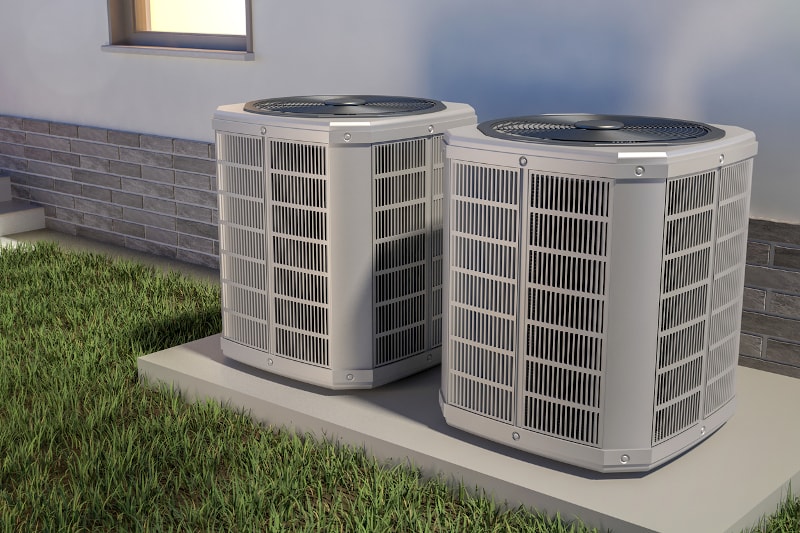Heat pumps are an efficient and cost-effective way to cool your home throughout the year in Swannanoa, NC. They’re also known to consume less electricity than traditional AC systems. Let’s take a look at the main components of a heat pump and how they work together to keep everyone comfortable.
Condenser
Your heat pump’s outdoor unit contains the condenser, which is one of the components that refrigerant flows through. It ensures that the heat pump can release heat efficiently when it’s in cooling mode, which is necessary for the system to function properly.
The condenser coil typically has a series of fins attached to it. The fins increase the surface area of the coil so that it can transfer heat more effectively. The system uses a fan to circulate the air around the coil, which increases the rate of heat transfer.
Refrigerant
Refrigerant is a substance that can easily change state from a liquid to a gas and vice versa. It’s used in heat pumps and air conditioners to move heat from one place to another. The refrigerant absorbs heat from the air in the evaporator and then releases it to the outside air in the condenser (or vice versa if used to heat your home).
Refrigerants are typically chosen based on their ability to absorb and release heat, their boiling point, and their toxicity. Some common refrigerants include R-410A, which is used in high-efficiency air conditioners and heat pumps and is considered a hydrofluorocarbon blend. Another type is R-22. This type of refrigerant was once widely used in air conditioners and refrigerators. Many companies phased it out due to its harmful effects on the environment.
Evaporator Coil
The evaporator coil is similar to the condenser, but it’s found in the indoor unit of your heat pump. In cooling mode, the evaporator absorbs heat from the air your heat pump circulates. The refrigerant flowing inside the evaporator coil changes state from a liquid to a gas as it absorbs heat, with the change in state allowing it to transfer the heat itself.
Compressor
The compressor is a mechanical device that uses electricity to move the refrigerant around the heat pump system. It has several moving parts, the main one being the fan.
By compressing the refrigerant, this particular piece of equipment increases the pressure and temperature of the refrigerant. Afterwards, it flows to the condenser to release heat (or, in heating mode, it flows to the evaporator coil instead).
Expansion Valve
The expansion valve is responsible for reducing the pressure of the refrigerant from the high-pressure side of the system to the low-pressure side. Accordingly, the refrigerant changes its state from a liquid to a gas, letting it absorb heat from the air in the evaporator.
There are two main types of expansion valves: thermostatic expansion valves (TXVs) and fixed orifice expansion valves (FOEs). Among these two, TXVs are more common. They work by using a sensing bulb to measure the temperature of the refrigerant at the outlet of the evaporator.
In a TXV, the sensing bulb connects to a diaphragm, and the diaphragm controls the opening of the valve. As the temperature of the refrigerant increases, the diaphragm expands, which opens the valve and allows more refrigerant to flow into the evaporator.
It’s important to understand that all the main components of a heat pump are interconnected. If one component fails, it can affect the performance of the entire system. Therefore, make sure to inspect and maintain your heat pump, as doing so will prevent the likelihood of breakdowns and keep your system running efficiently.
Contact Gentry Service Group to schedule a heat pump maintenance, repair, or installation appointment. One of our NATE-certified technicians will visit your home and help troubleshoot your heating and cooling issues. We pride ourselves on providing the highest level of technical expertise and customer service to every home and business owner.
Image provided by iStock


